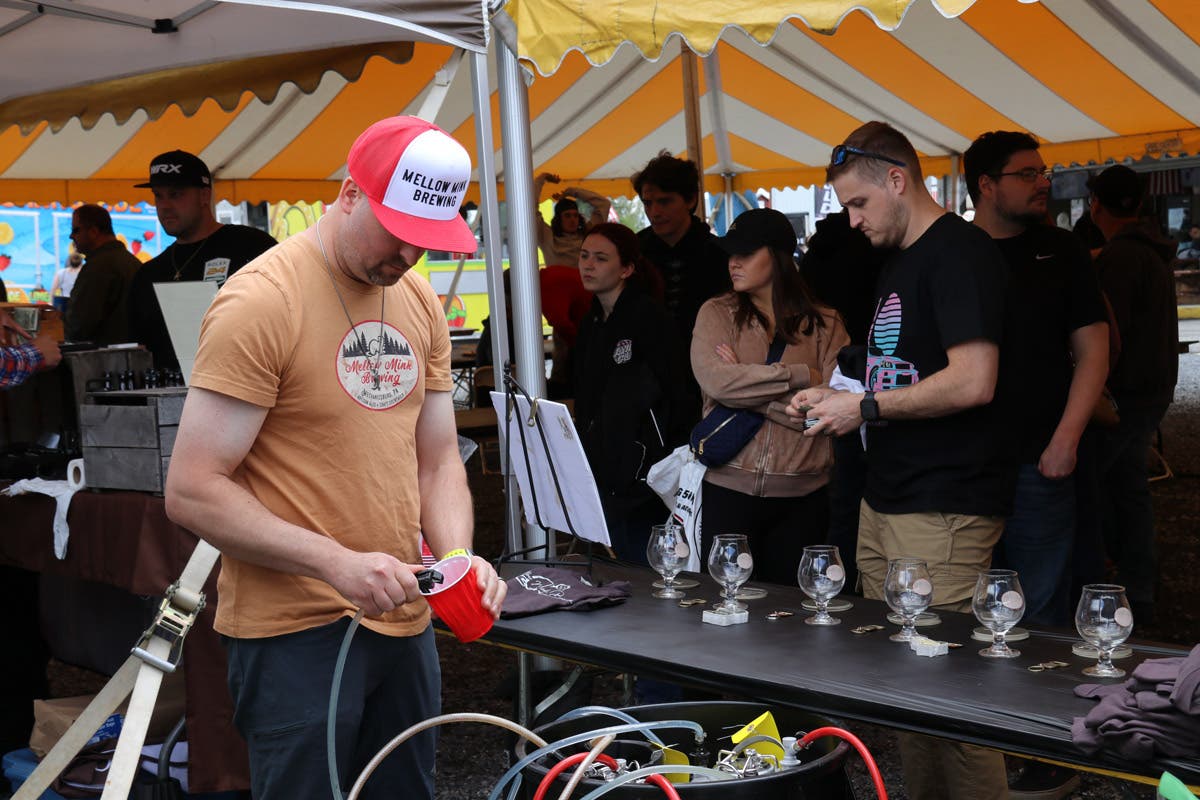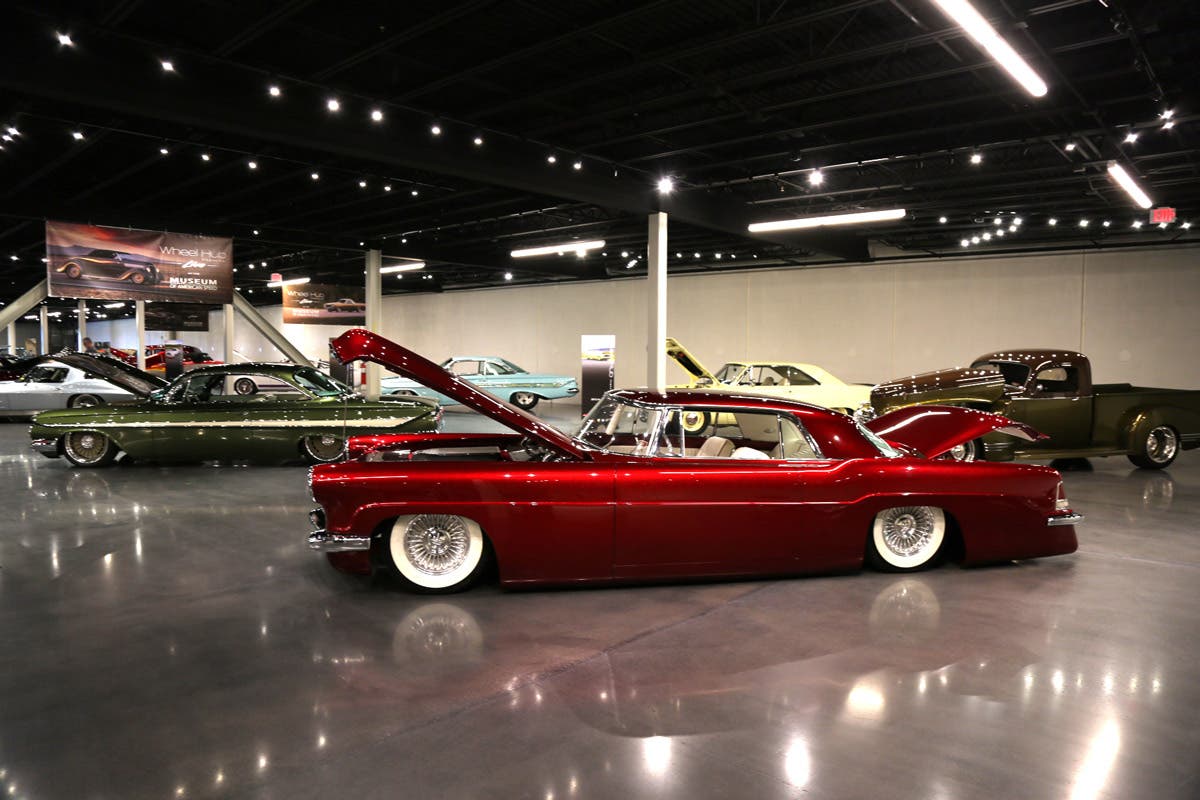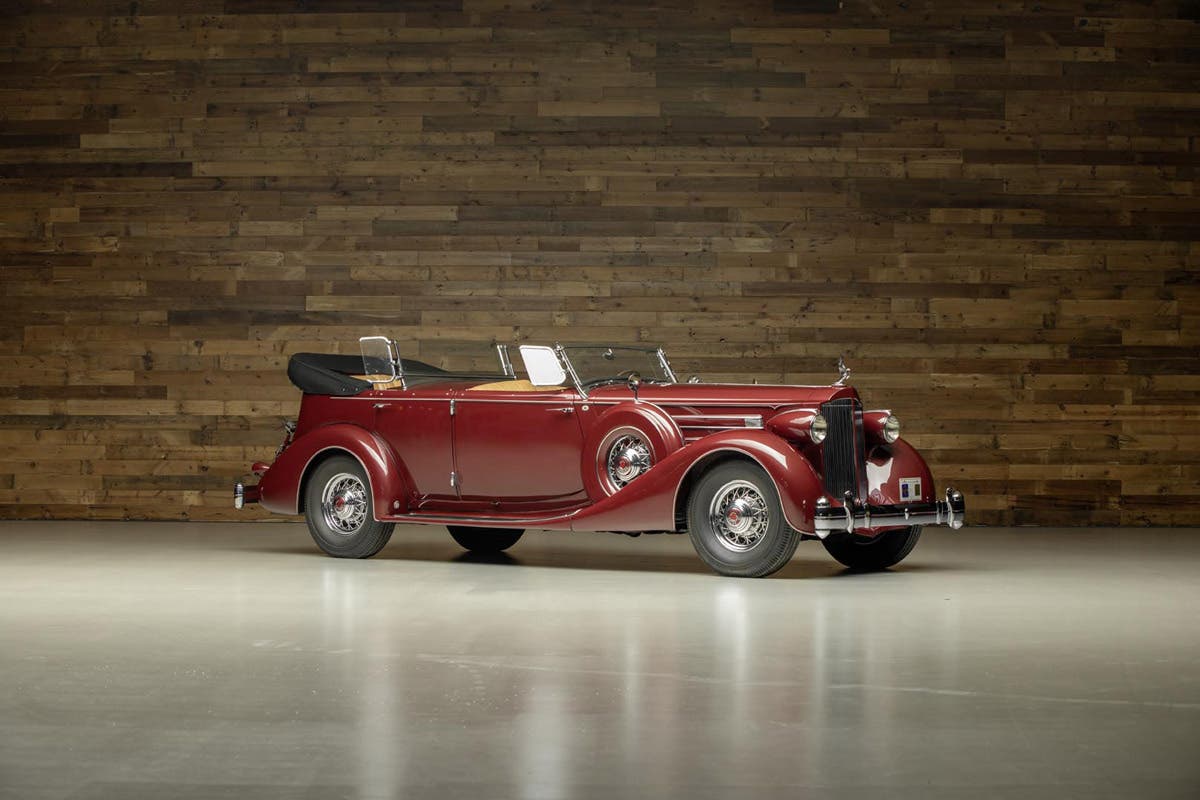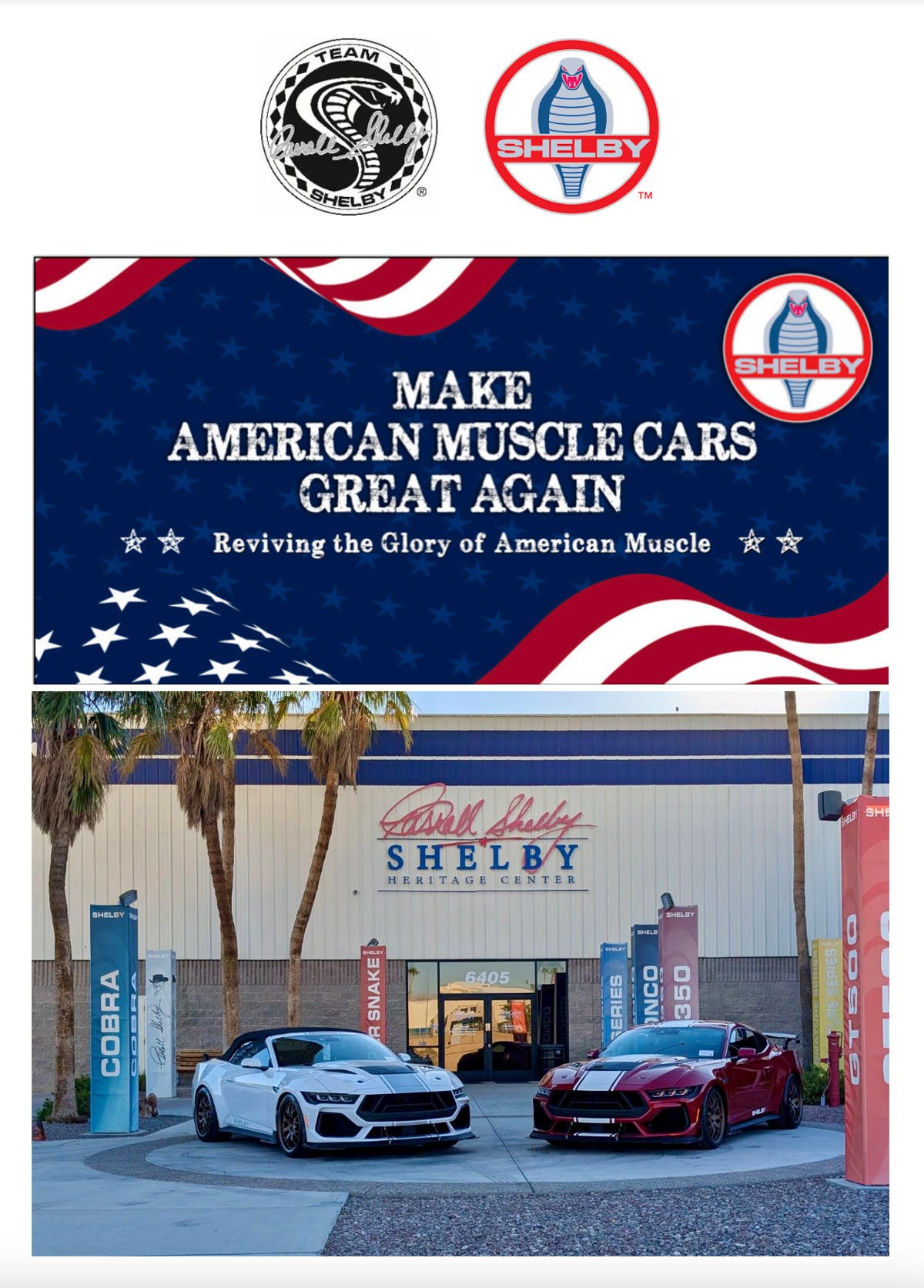In 1984, I went on the Great American Race. I'm glad that I did. "Doing the race" is a once-in-a-lifetime experience and one that you don't forget for as long as you live.
Even back then, doing the race was expensive. That's because it's worth it. When you finish your cross-country antique-car trek you'll feel like Walter Mitty, Huck Finn, Indiana Jones and Jay Leno all rolled up into one person.
If your budget doesn't have a "Great Race" category, find some friends and pool your resources. Or find a sponsor. Or rob a bank. Or sell Kool-Aid. Do something. If you love old cars, Old Glory and telling your grandkids stories when you get old ' then find a way to do the Great Race. When it's over, your bones may creak and you may have to re-restore your car, but you'll be happy.
Back in 1984, the race only went halfway across the country, but that didn't make it half as much fun. No matter how many days and how many miles it involves, the Great Race is fun every minute. It's like a rolling party. Be prepared to have some unique experiences and bring along a thick address book, because you're going to make lots of new friends.
You'll meet many new acquaintances at the events and shindigs at stops along the way. But you'll forge lifetime bonds when your coil overheats and someone you never met before comes up with a spare and gives it to you.
The 1984 event started in Hollywood. Calif. By the way, there's something very appropriate about starting there. We wound up in Indianapolis a week or so later. Being a writer, I got to ride on different cars, which emphasized the overall sense of adventure.
A trip to the George Barris collection with Gary Wales got things going in Hollywood. Little did I know that Gary a man I had met at a Christie's Auction in 1983 would eventually win the '84 race. Wow! My first GAR and my friend Gary took the gold ring!
The next day I departed LA in a 1929 Packard Deitrich-bodied dual-cowl phaeton owned by Dave Rosenheim. Dave was a toymaker who created a miniature Elvis Presley Cadillac. His restorer was Al Sico, who had worked for me years before in a sales job. Al offered me a ride and that seemed cool until we pulled Baker Grade in the Packard. It got a little hot near the Continental Divide, but we managed to make it.
Talk about exciting. In Barstow, we rounded a corner and another Packard ahead of us was on fire! Though we probably broke a rule or two, we took the extinguisher from our car and went to the rescue. (Now, don't try this at home, but I really was a volunteer firefighter back then). With the fire out, we headed for Vegas. Our driver stopped at the Stateline Casino to throw a few quarters into the slots and actually won. Was it a good omen?
That evening I spent my first night at the Imperial Palace (the only place a car collector should stay in Vegas) and I just about "missed the train" the next morning. The race people stayed at the old Dunes and Robert Goulet was doing a send-off there. I over-slept and arrived just in time to hitch a ride with race founders Tom McCrae and Norm Miller in a modern travel van. Since that was no fun, at lunchtime I switched to a 1913 Hupmobile owned by a man name Lou from Ohio (who later worked for the Dominos Collection).
Not too long after switching cars, Lou's little runabout broke down and I switched to the rumbleseat of a '31 Chrysler Imperial owned by Frank Kleptz of Terre Haute, Ind. Man, was that a nice car. Angelo and Keith can have their Duesenbergs and I'll take Frank's Imperial. It drove like a modern car. I do have to admit, though, that cruising the desert in a rumbleseat at 65 mph has its downside. Mr. Kleptz got me safely to Albuquerque, New Mexico.
We had a pretty wild night that night. It involved a hotel detective who thought we were suspicious and a false wedding cake made for a woman to jump out of. Unfortunately, we only saw the cake ' not the girl. Then a local Studebaker collector named Monte offered me a getaway ride (from the hotel detective) in his '31 President phaeton. "Let's go" was the only sane answer.
Still feeling a little wild the next morning, I hitched a ride from Albuquerque to Amarillo, Texas on "Doc" Fuson's early, chain-drive, American LaFrance fire truck. Co-pilots Terry and Gene said that the N.Y. Times reporter had bailed after a few hours in the hose bed. Then I told them I really was a fireman and they were stuck with me.
Late that afternoon, right before hitting our destination, we pulled into an SCCA timing stop (In those days, the SCCA timed and sanctioned the GAR) and who came running up to the truck but ALF historian John Peckham. He had been consulting with publisher Walter Haessner in Tucson, and heard about the race on the radio in his Pacer while starting the drive home to New York. He wanted to record the fire truck's serial number. Boy, was I surprised to see him way out in the desert. John didn't recognize me at first. I was wearing only shorts and sneakers and I was black from the film of oil that the truck's chains threw up into the hose bed.
That night we had a great barbeque in Amarillo and I met automotive photographer Jerry Heasley for the first time. Today, even as I'm writing this, Jerry is in the process of finishing his new book Corvette Masterpieces for me. It will be available later this year. Jerry and I go back a long way.
As might be expected, I was pretty worn out after doing the desert, so the next day I drove to Dallas with Al Sico in a modern chase vehicle. We sped ahead of the race (which stretches out over 100 miles) and got to the hotel in mid afternoon. That gave us time to nap before the cars arrived.
The next leg of the race was a run from Dallas to Kansas City, Missouri. If I remember right, I went back into Dave Rosenheim's Packard for this excursion. That car never had a lick of trouble after heating up slightly that first day.
My next old-car leg was the one from Kansas City to Chicago, Ill.. For that adventure I stuck out my thumb and caught a ride with Walter Cunny and Bill Grams. Walter was a big collector from Genoa City, Ill. And Bill and his brother Greg operate the well-known Volo Auto Museum in the same state. The car they were driving was a gorgeous 1911 Palmer-Singer that once belonged to my mentor "Austie" Clark.
Walter really loved driving that car in the race and wore a leather jacket, leather driving helmet and goggles when he was behind the wheel. Since we were way out of the running, we kind of took our time and played around. When Bill got tired, he'd move to the rear seat and I'd go up front. That was against the rules and upset a few of the driver's we passed. Since I worked for Old Cars Weekly, they might have thought I knew something trick, but nothing could be further from the truth. In fact, I never understood the timing or scoring system. Still, the other drivers didn't know that, so we put them on a bit.
There was a big party in Chicago that night and I was riding with two hometown boys. When we got in, they knew everybody. In fact, Walter Cunny's dad came to greet us. Another Old Cars Weekly editor Dennis Schrimpf also came down from our Iola headquarters. We had scored tickets to the Indy 500 and Dennis was anxious to see the race.
The run to Indy was a short one. If I recall, I switched back to Frank Kleptz's Imperial and we cruised to Interstate 65 and started to follow it to Indy, making one official stop along the way in one of those old-fashioned Indiana city's with a Norman Rockwell-type town square. When we got back on the highway there was a traffic jam, but Frank ' being a Hoosier ' knew all the shortcuts. I seem to remember something about doing a U-turn in a grassy median and taking an alternate route into Indy. Or maybe we just drove in the median to get around traffic.
Whatever Frank or his son Dave d id, it worked, and we were the first car (or one of the first) to get to where we were going which was the drag strip. Later, in Indy, the Great Racers got to drive their cars in the big Festival Parade and Dennis and I got to attend the Indy 500. Having had just finished the experience of a lifetime, we actually had trouble keeping our eyes open in those hot bleachers during a hot Brickyard Classic.
Man, would it be great to go on next year's race when the goal is to travel around the world!
To learn more about the
2007 Great American Race,
click HERE.








